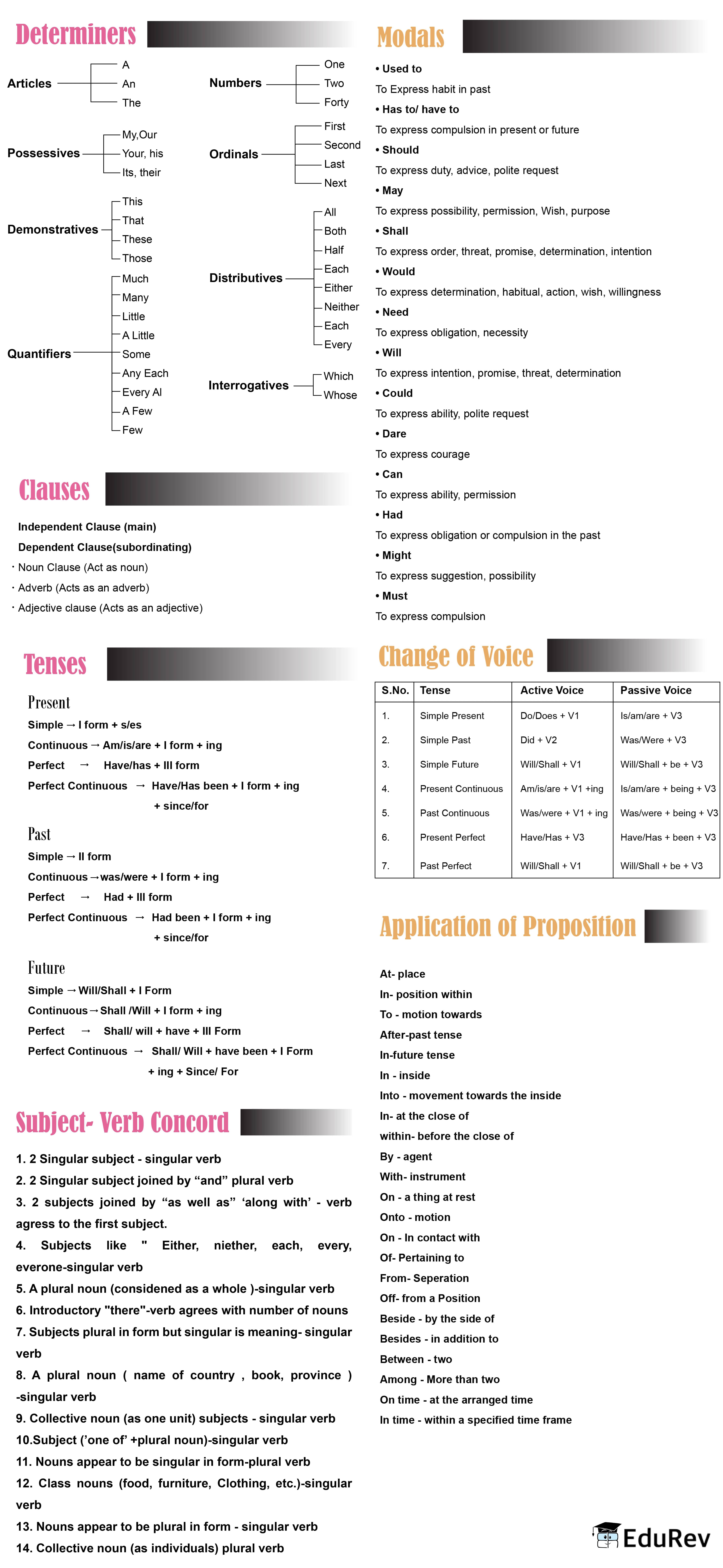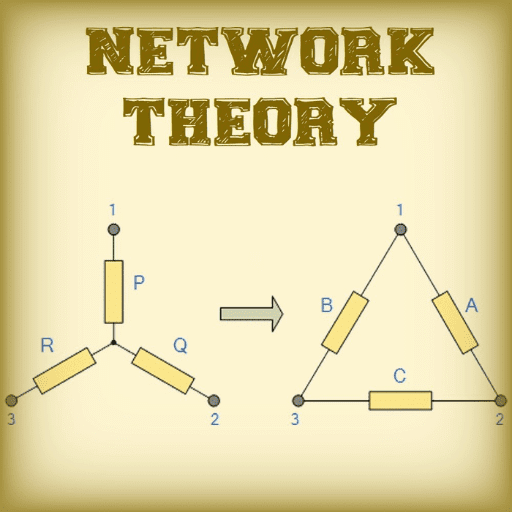Best Study Material for Class 9 Exam
Class 9 Exam > Class 9 Notes > English Class 9 > Mindmap: English Grammar
Mindmap: English Grammar | English Class 9 PDF Download

The document Mindmap: English Grammar | English Class 9 is a part of the Class 9 Course English Class 9.
All you need of Class 9 at this link: Class 9
|
119 videos|684 docs|84 tests
|
FAQs on Mindmap: English Grammar - English Class 9
| 1. What are the different parts of speech in English grammar? |  |
| 2. What is the difference between a transitive and intransitive verb? |  |
Ans. A transitive verb is a verb that requires a direct object to complete its meaning, while an intransitive verb does not require a direct object. For example, in the sentence "She ate an apple," the verb "ate" is transitive because it requires the direct object "apple." In contrast, the verb "sleep" in the sentence "He sleeps peacefully" is intransitive as it does not require a direct object.
| 3. How do you form the plural of nouns in English grammar? |  |
Ans. In English grammar, the plural of most nouns is formed by adding an -s or -es to the end of the singular noun. For example, "book" becomes "books," and "box" becomes "boxes." However, there are some irregular nouns that have unique plural forms, such as "child" becoming "children" and "mouse" becoming "mice."
| 4. What is the difference between a subject and an object in a sentence? |  |
Ans. In a sentence, the subject is the noun or pronoun that performs the action or is being described, while the object is the noun or pronoun that receives the action of the verb. For example, in the sentence "She threw the ball," "she" is the subject as she performs the action, and "ball" is the object as it receives the action of being thrown.
| 5. How do you identify the tense of a verb in English grammar? |  |
Ans. The tense of a verb in English grammar indicates the time of an action or state. To identify the tense of a verb, you need to consider the verb form and any accompanying auxiliary verbs. For example, the verb "eat" in the sentence "I ate an apple" is in the past tense, while the verb "will sing" in the sentence "She will sing a song" is in the future tense.
Related Searches



















